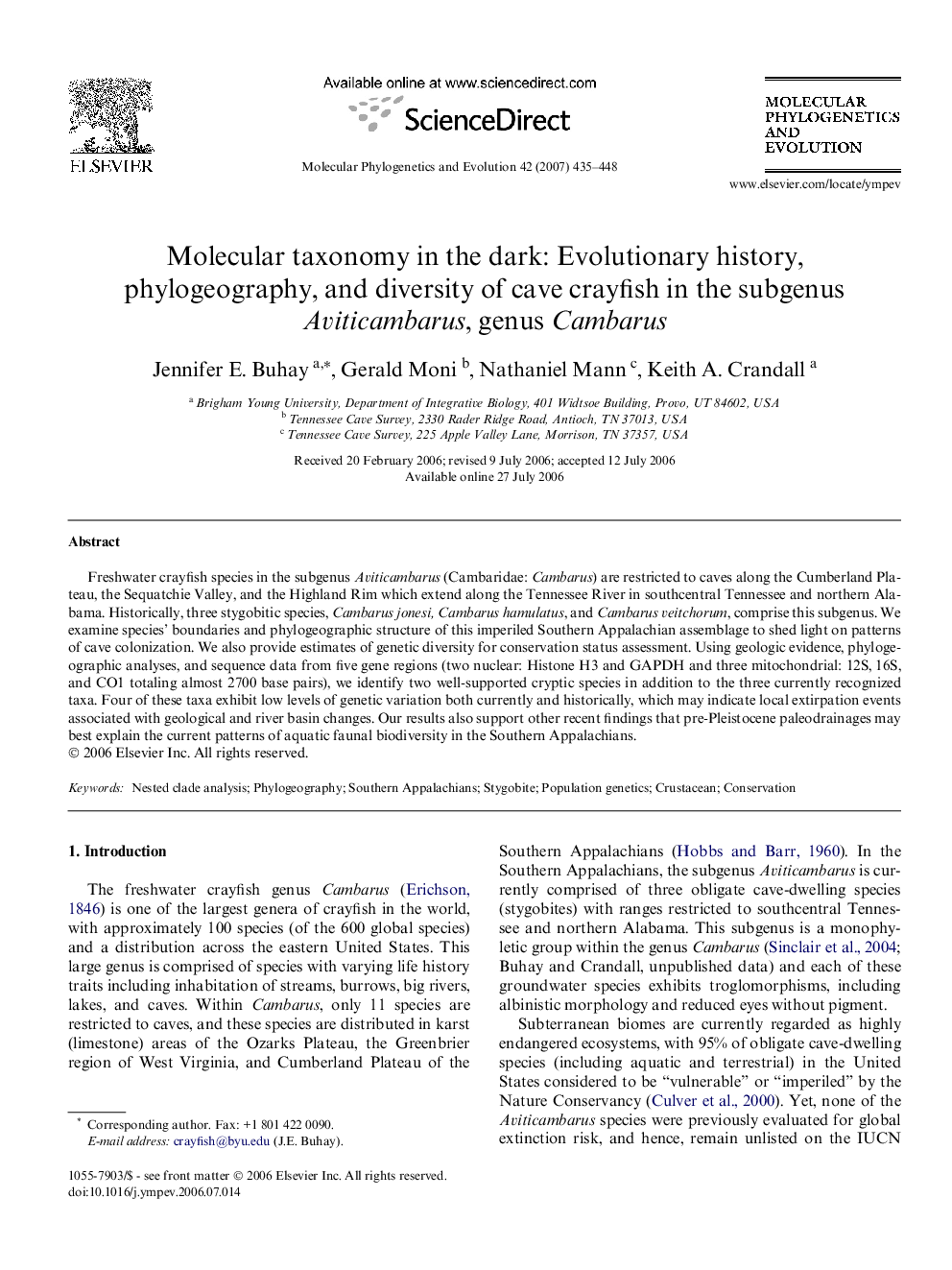| Article ID | Journal | Published Year | Pages | File Type |
|---|---|---|---|---|
| 2835527 | Molecular Phylogenetics and Evolution | 2007 | 14 Pages |
Freshwater crayfish species in the subgenus Aviticambarus (Cambaridae: Cambarus) are restricted to caves along the Cumberland Plateau, the Sequatchie Valley, and the Highland Rim which extend along the Tennessee River in southcentral Tennessee and northern Alabama. Historically, three stygobitic species, Cambarus jonesi, Cambarus hamulatus, and Cambarus veitchorum, comprise this subgenus. We examine species’ boundaries and phylogeographic structure of this imperiled Southern Appalachian assemblage to shed light on patterns of cave colonization. We also provide estimates of genetic diversity for conservation status assessment. Using geologic evidence, phylogeographic analyses, and sequence data from five gene regions (two nuclear: Histone H3 and GAPDH and three mitochondrial: 12S, 16S, and CO1 totaling almost 2700 base pairs), we identify two well-supported cryptic species in addition to the three currently recognized taxa. Four of these taxa exhibit low levels of genetic variation both currently and historically, which may indicate local extirpation events associated with geological and river basin changes. Our results also support other recent findings that pre-Pleistocene paleodrainages may best explain the current patterns of aquatic faunal biodiversity in the Southern Appalachians.
